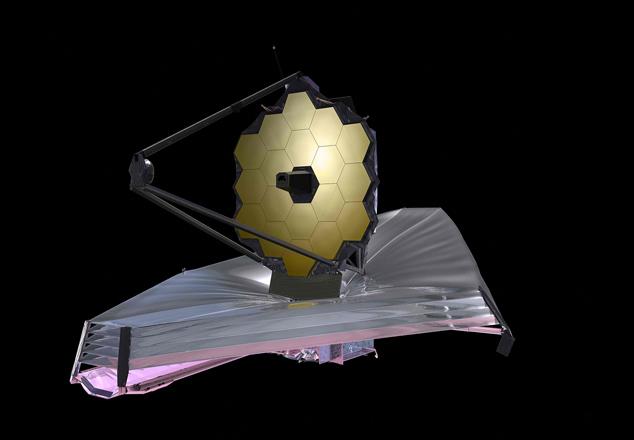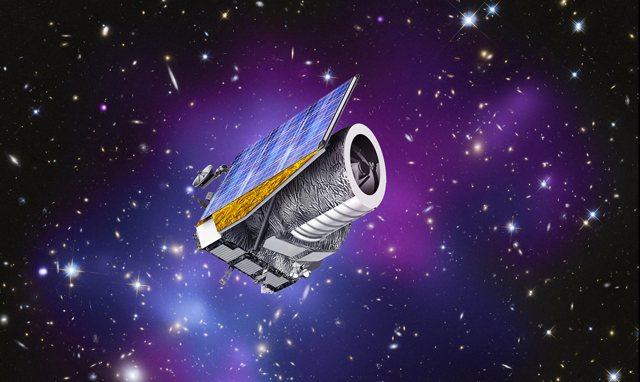You are here
As astronomers mark 25 years of Hubble past, they predict more discoveries ahead
Apr 25,2015 - Last updated at Apr 25,2015
BALTIMORE — The Hubble Space Telescope survived decades of delays, glitches and blunders to fulfil predictions that it would rewrite science textbooks. But as it moves into the final years of its life, scientists say some of its best work still could be ahead of it.
Hubble’s past and future discoveries will guide the new James Webb Space Telescope, scheduled to launch in 2018, as the next-generation observatory focuses more closely on the Big Bang and helps paint a fuller picture of the properties of distant planets and galaxies.
As Hubble marks the silver anniversary of its April 24, 1990, launch, scientists are celebrating what has been a turbulent yet rewarding history, answering long-held questions about the age and expansion of the universe. But they also expect a bright future with more surprise discoveries as they peer into the cosmos in new ways.
“The combination of these two observatories will be very powerful scientifically,” said Ken Sembach, head of the Hubble mission at Baltimore’s Space Telescope Science Institute. “They’ll be able to follow up on each other’s discoveries.”
The Hubble mission got off to a rocky start. Originally planned to launch in 1983, it was delayed first by hiccups in its assembly and then by the space shuttle Challenger’s explosion in 1986. Once it got into space in 1990, all was still not well — a major error in construction of the telescope’s primary mirror meant images came back to Earth blurry.
The mistake nearly cost scientists future discoveries, inviting “withering criticism” from federal lawmakers wary of a repair mission that would end up adding more than $1 billion to a price tag that was already up to nearly $5 billion through the launch. Maryland Sen. Barbara A. Mikulski, who served as chairwoman of the subcommittee that provided NASA with funding and oversight, was among those who pushed for a fix.
“NASA’s credibility was hanging in the balance,” said Kevin Kelly, chief clerk of the subcommittee, who worked closely with Mikulski. “Had they not fixed this, I would say with much of what they’ve accomplished and done over the last 20 years, they wouldn’t have gotten very far.”
Since the 1993 mission to repair Hubble’s eye, the orbiting telescope has delivered on its promise, shedding new light on how planets form and corroborating the theory behind black holes.
With Hubble, astronomers used measurements of the distance to 18 galaxies to calculate the rate at which the universe is expanding, dubbed the Hubble constant, also named in honour of the astronomer Edwin P. Hubble. From that, they learned that the Big Bang occurred about 13.8 billion years ago.
In recent years, astronomers shifted their focus farther in space, using new instruments to stretch the telescope’s view to just 500 million years after the Big Bang. The telescope’s cumulative cost is estimated at more than $10 billion.
There are more ideas for ways to use Hubble than time to do them. The latest call for proposals for what the telescope should observe next drew 1,100 applications, only about a fifth of which will go forward, said Padi Boyd, the telescope’s deputy project scientist for operations at NASA Goddard Space Flight Centre in Greenbelt, Md., which also manages the telescope.
But Hubble is up for the challenge, she said. After so many years circling 547 kilometres above Earth at a speed of 8km each second, Hubble is at what she called “the peak of its capability”. The telescope underwent five servicing missions, starting with the critical repair in 1993 and ending with a final makeover in 2009 that added two key new instruments and fixed two others.
Officials aim to keep Hubble operating for at least another five years, depending on how long engineers can keep its gyroscopes working. The devices help Hubble navigate and pinpoint objects in space, and one of six on board already has failed. But project scientists are working to preserve the remaining five, and to extend Hubble’s ability to target distant objects even after more of the gyroscopes inevitably fail, Boyd said.
Barring unexpected problems with Hubble or delays for the James Webb telescope, astronomers will be able to use the observatories in tandem for at least a couple of years.
While Hubble sees the universe in a range from ultraviolet to near-infrared light, including visible light, Webb will look in the infrared. Using both to look at the same objects will offer a fuller picture of their composition and behaviour, astronomers said.
For example, Hubble has found distant planets of interest, and scientists have learned much about the characteristics of any atmosphere surrounding them using techniques that analyse how their appearance changes as they pass in front of stars. But a spectrometer aboard the Webb telescope will reveal more about what elements are present, said Pascal Oesch, a postdoctoral fellow at Yale University studying galaxy structure, formation and evolution.
Meanwhile, Hubble’s observations are helping inform scientists’ priorities and wish lists for the Webb. The Webb telescope mission is expected to last five-and-a-half years, though it could be extended to 10 years or more, so the more Hubble can guide its precious time, the better.
“We don’t want to spend time doing things we can do right now,” Oesch said.
Bill Ochs, the Webb telescope’s project manager at NASA Goddard, said recent accomplishments in its development include a successful unfolding of the telescope’s massive sun shield and final assembly of the plane to which its 18 mirrors will be mounted.
Many hurdles remain, though. The telescope’s makers at Goddard must replace faulty wiring manufactured for the back of that mirror plane, potentially delaying assembly of key optical components of the telescope. Ochs said he doesn’t expect the problem to affect the telescope’s larger timeline.
So far, Webb has escaped some of the pressure that Hubble faced.
“I think Congress is still pleased with the progress we’re making,” Ochs said. “They ask questions and they’re obviously concerned about risk, but overall, I think they’re pleased.”
Getting it into orbit before Hubble’s demise also could make a difference in inspiring the next generation of astronomers. Hubble kept many tenured astronomers busy for most of their careers, but for some, the observatory’s launch is at best a childhood memory.
Adam Kowalski was a six-year-old when the telescope began its orbit, and remembers seeing its images in astronomy magazines and newspapers as a young boy.
But within those very images, depicted on posters that still hang on the wall of his childhood bedroom in Ohio, could be the same stars the 31-year-old now uses Hubble to study as a research scientist at NASA Goddard: “Those were my inspiration in my early teens.”
Related Articles
WASHINGTON — The James Webb Space Telescope has arrived at its cosmic parking spot more than a million kilometres away, bringing it a step c
BEIJING — The world’s largest radio telescope began operating in southwestern China on Sunday, a project Beijing says will help humanity sea
CANNES, France — For now, Europe’s Euclid spacecraft sits quietly in a sterilised room in the south of France, its golden trim gleamin














